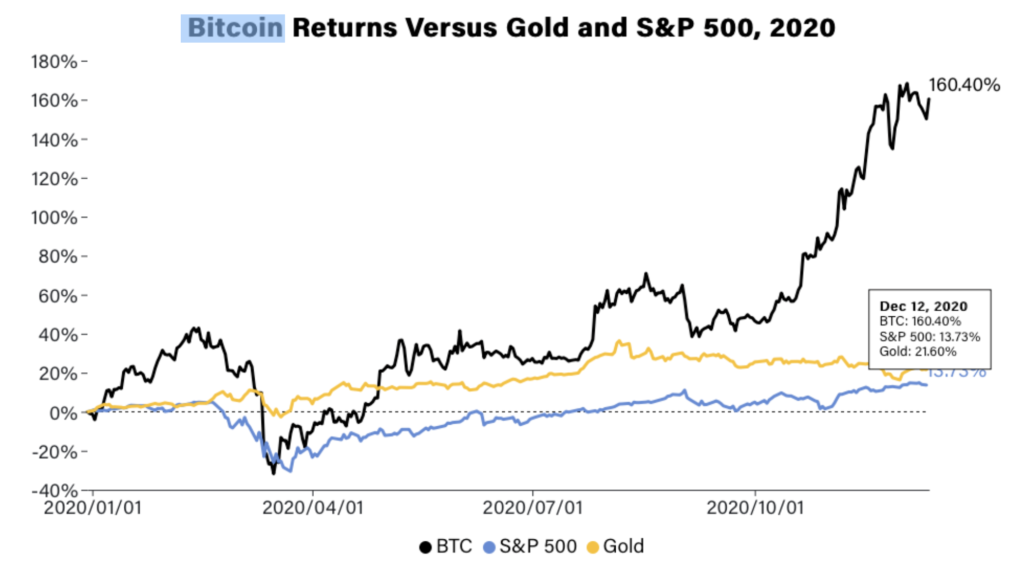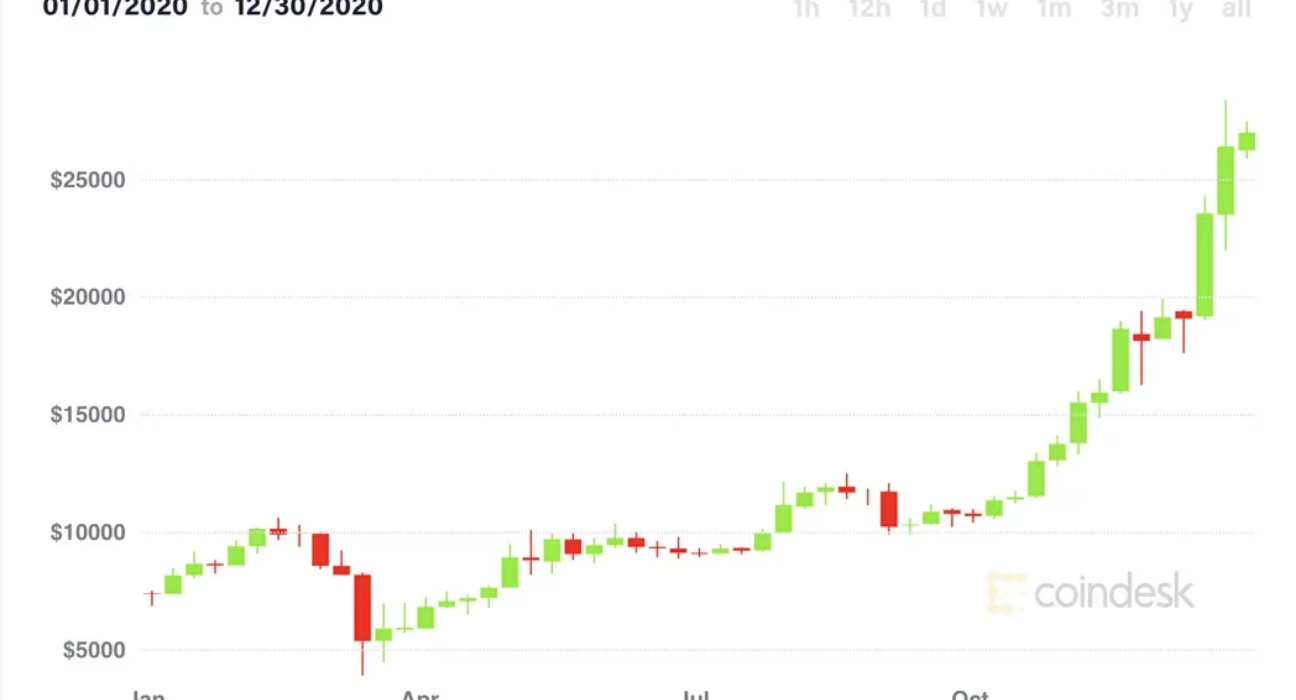COVID-19 ravaged the world’s economies but prompted mainstream financial markets to start taking bitcoin seriously. A look back at the year in bitcoin.
For many reasons 2020 will loom large in future textbooks on financial history.
This year saw the biggest drop-off in economic output since the Great Depression, the biggest spate of money printing in the Federal Reserve’s 107-year history spurred by a coronavirus pandemic, an epochal shift toward remote working and negative prices for crude oil futures.
Perhaps as important in the pantheon of monetary milestones, 2020 saw the first real signs banks, money managers, insurance firms and companies started to embrace fast-growing markets for cryptocurrencies and digital assets.
An open-source software programmer going by the name Satoshi Nakamoto designed bitcoin 11 years ago, the first cryptocurrency. It was built atop a cryptography-based “blockchain” network that could support a peer-to-peer electronic payments system, one that wouldn’t be under the control of any single person, company or government.
At the start of the year, bitcoin was still considered a fringe investment, disparaged by the likes of the billionaire investor Warren Buffett as having “no value.” By the end of the year, however, bitcoin has nearly quadrupled in value, reaching an all-time high above $28,000 and thrusting itself into the center of conversations among big investors and Wall Street firms.
Some bitcoin proponents saw the success of the cryptocurrency and its underlying blockchain network as validation of a landmark technology that might forever change finance.
But what changed bitcoin’s price trajectory in 2020 was its growing adoption as a hedge against the potential currency debasement that might come from trillions of dollars of coronavirus-related stimulus payments from central banks and governments around the world.
The thesis derives from the hard-coded limits on bitcoin’s supply, which are programmed into the underlying blockchain network. Unlike government currencies that can be issued subjectively and at will by central bankers, only 21 million bitcoins can ever be created.

And bitcoin’s growing adoption as an asset that trades based on macroeconomic trends meant it provided investors and analysts with as good a prism as any through which to view the year’s monumental economic developments and rapidly shifting financial landscape.
In the years before COVID-19 hit, low interest rates and the U.S. dollar’s reign as the global reserve currency allowed the U.S. government and its corporations to amass a heavy debt load that many observers warned was unsustainable. Once the pandemic hit, authorities’ response was to invoke what one leading economist described as the “war machine”: a Federal Reserve willing to finance U.S. government emergency-relief packages – and budget deficits – in the trillions of dollars.
Eventually, markets from stocks to bonds became hooked on the expectation that stimulus would be provided in amounts needed to keep investors from suffering losses deep enough to impair confidence and derail the economic recovery. As national authorities and monetary policymakers kept promising more and more stimulus, bitcoin’s price went up.
The cryptocurrency’s outperformance through it all eventually attracted the notice of big traditional finance players including JPMorgan Chase, BlackRock, AllianceBernstein, Morgan Stanley and Tudor Investment, which responded by buying billions of dollars of the previously scorned asset and flattering it with bullish research reports.
